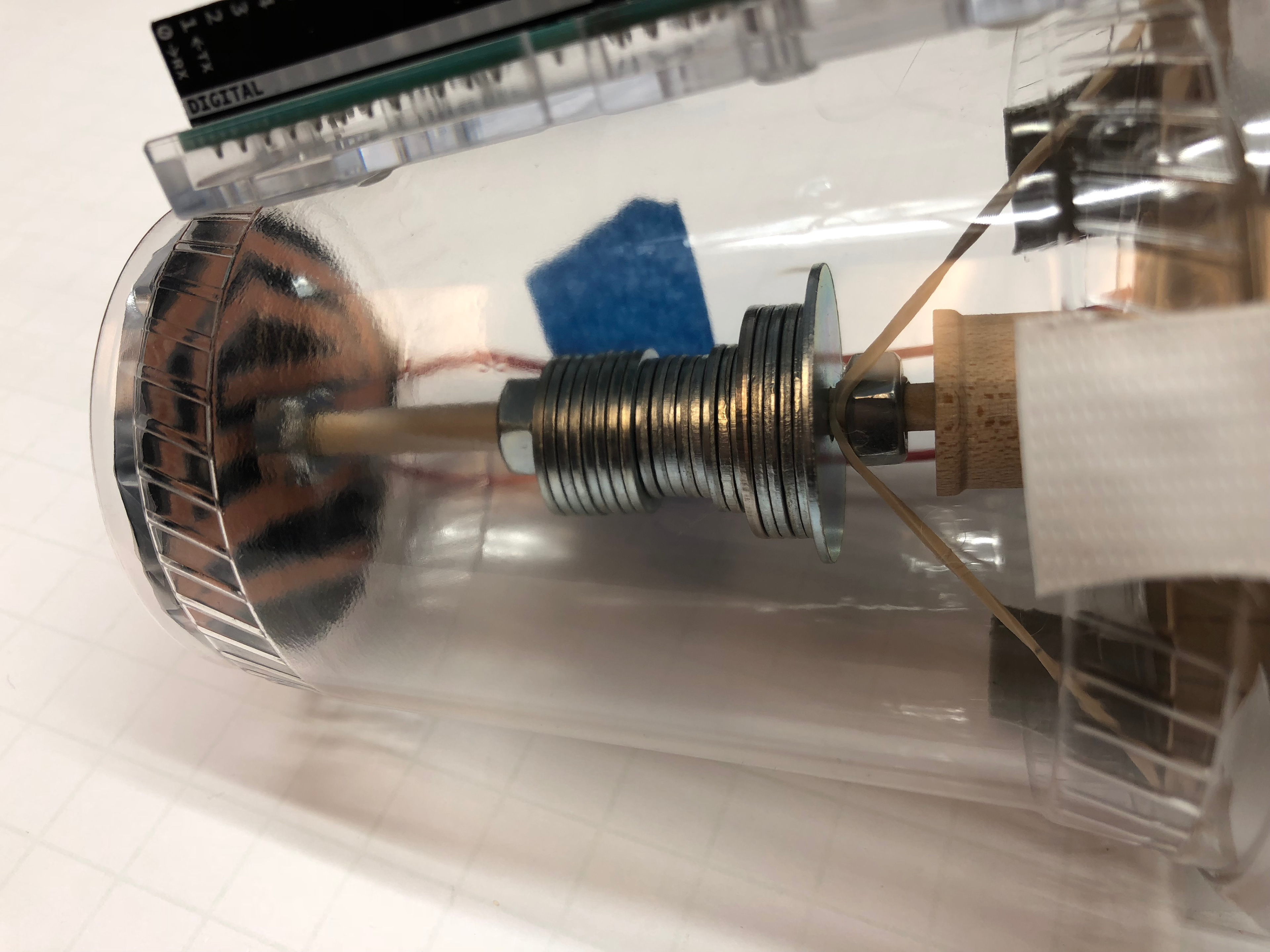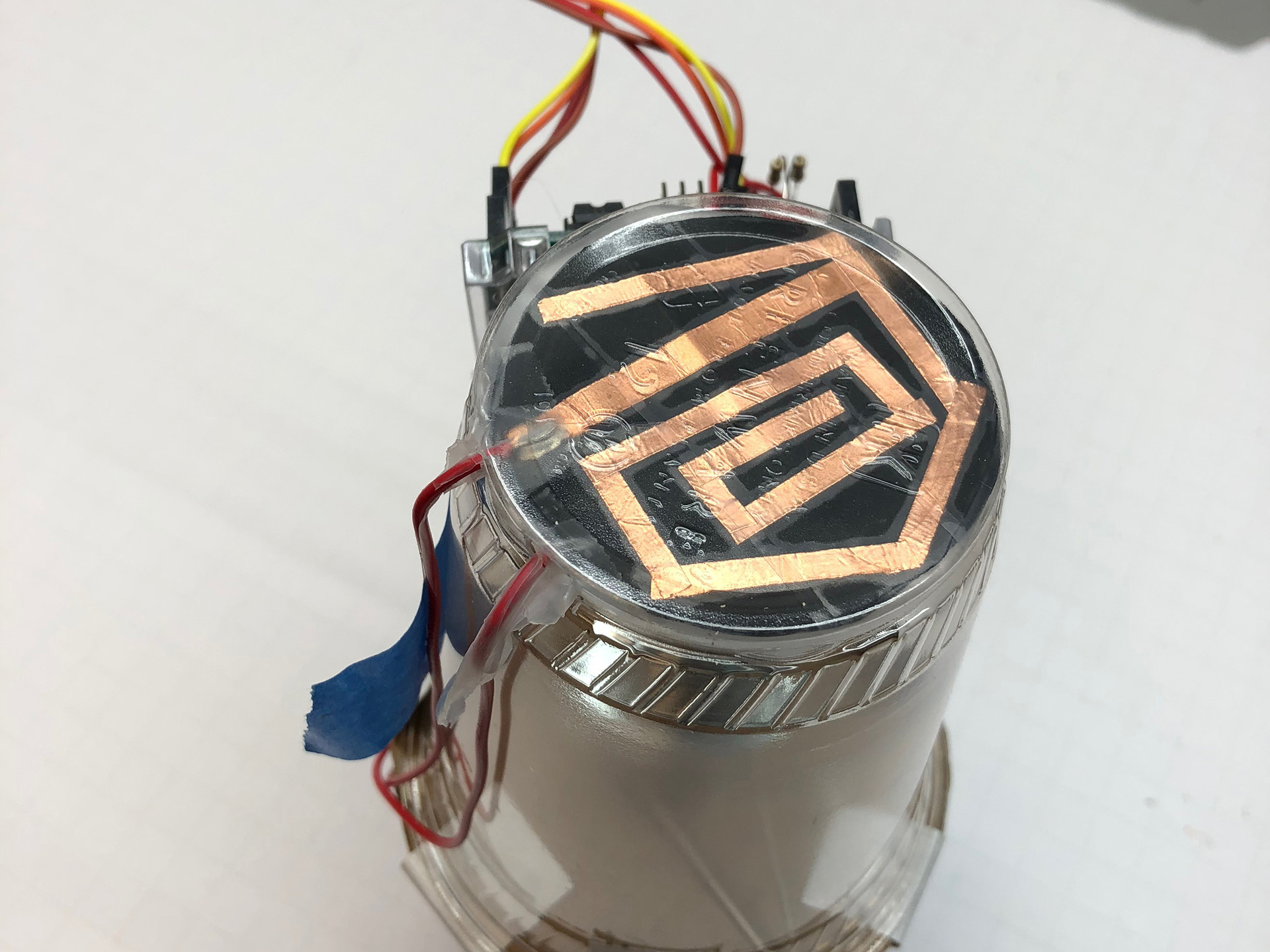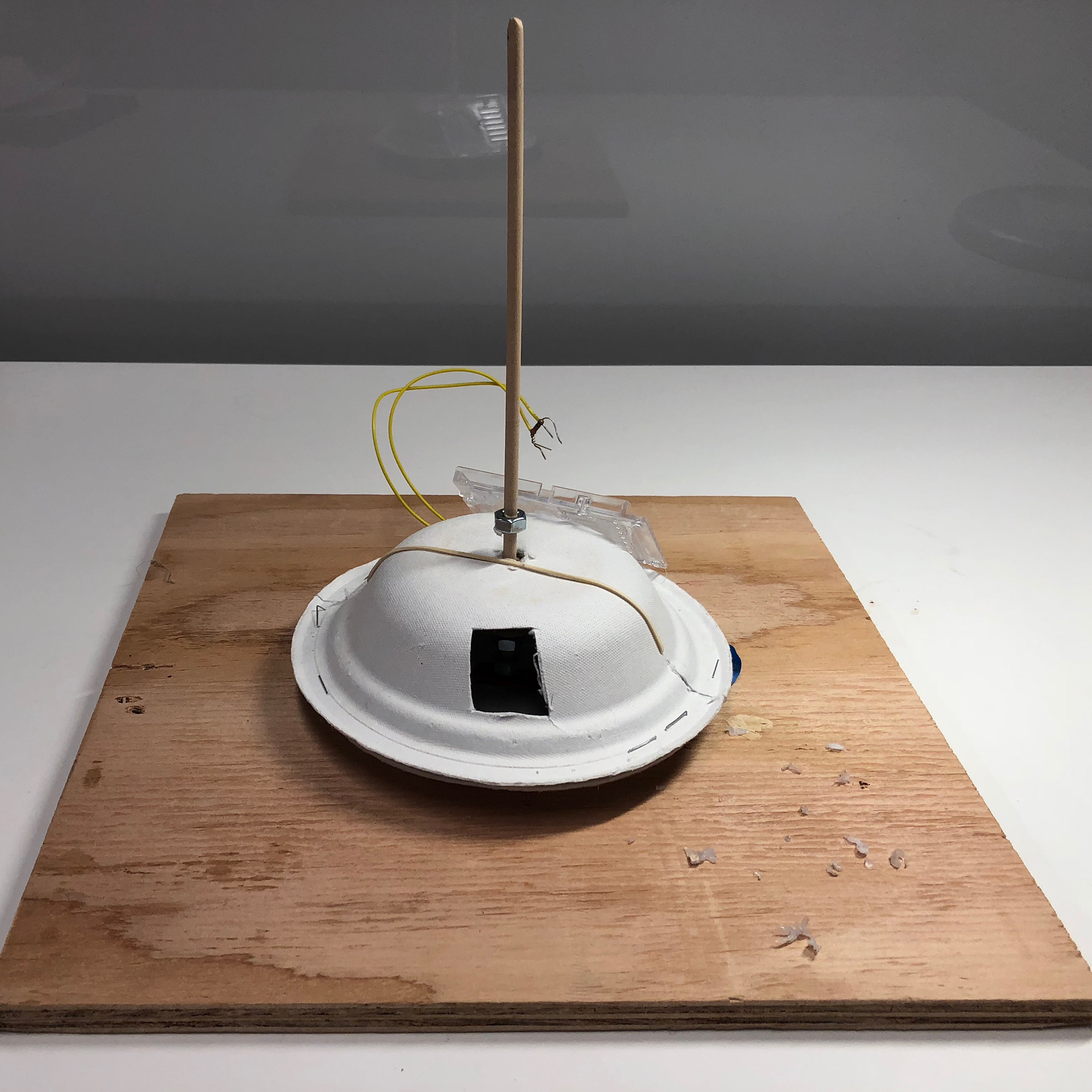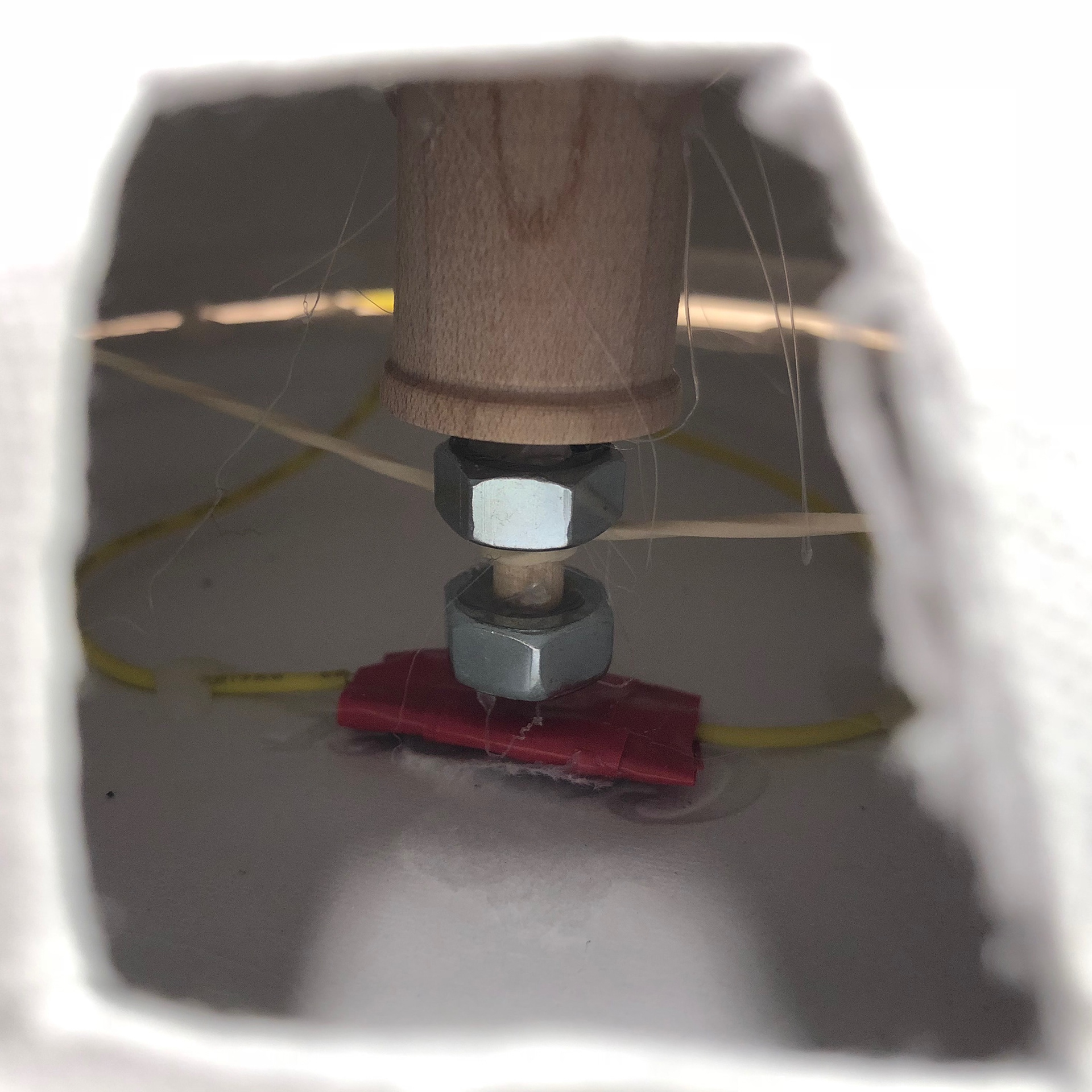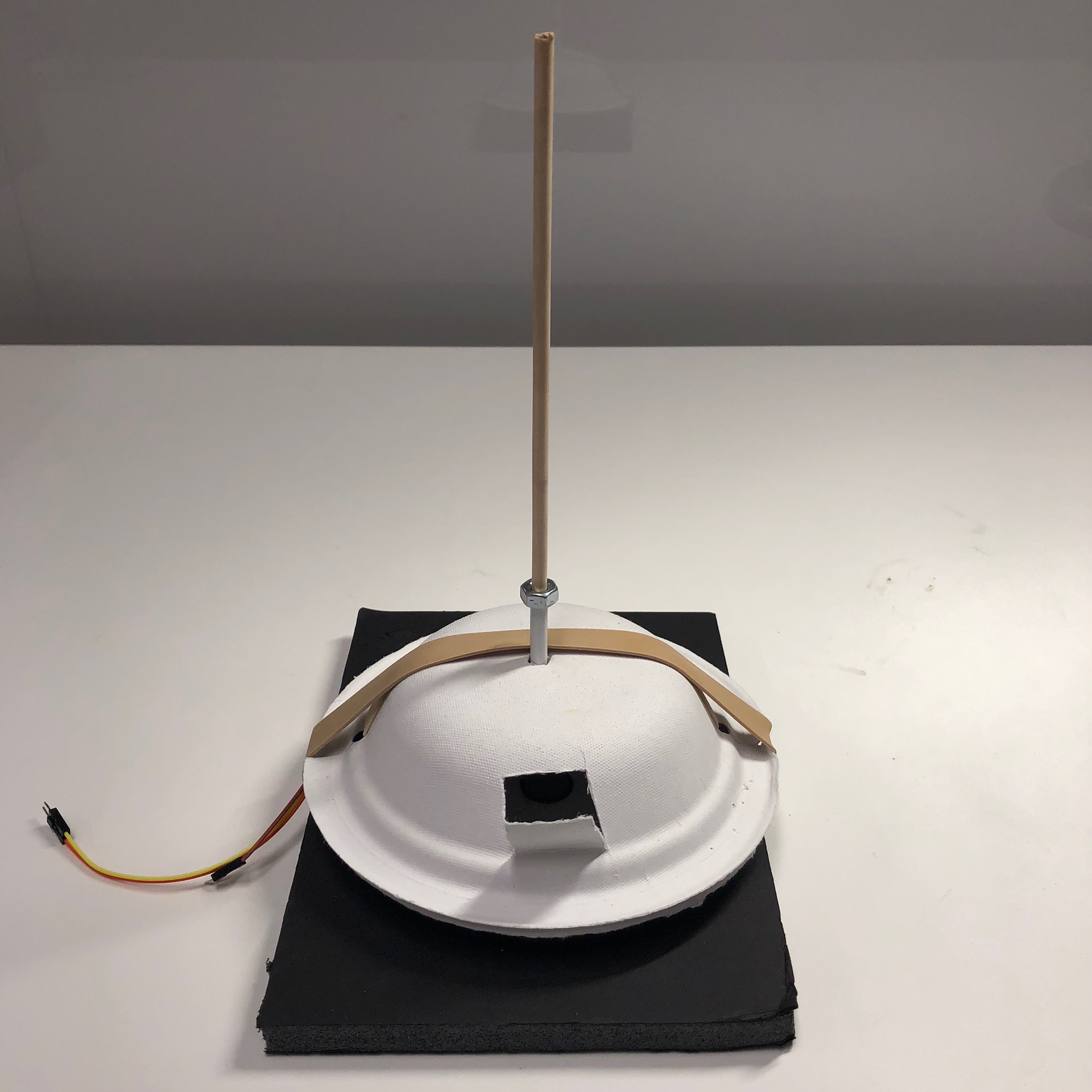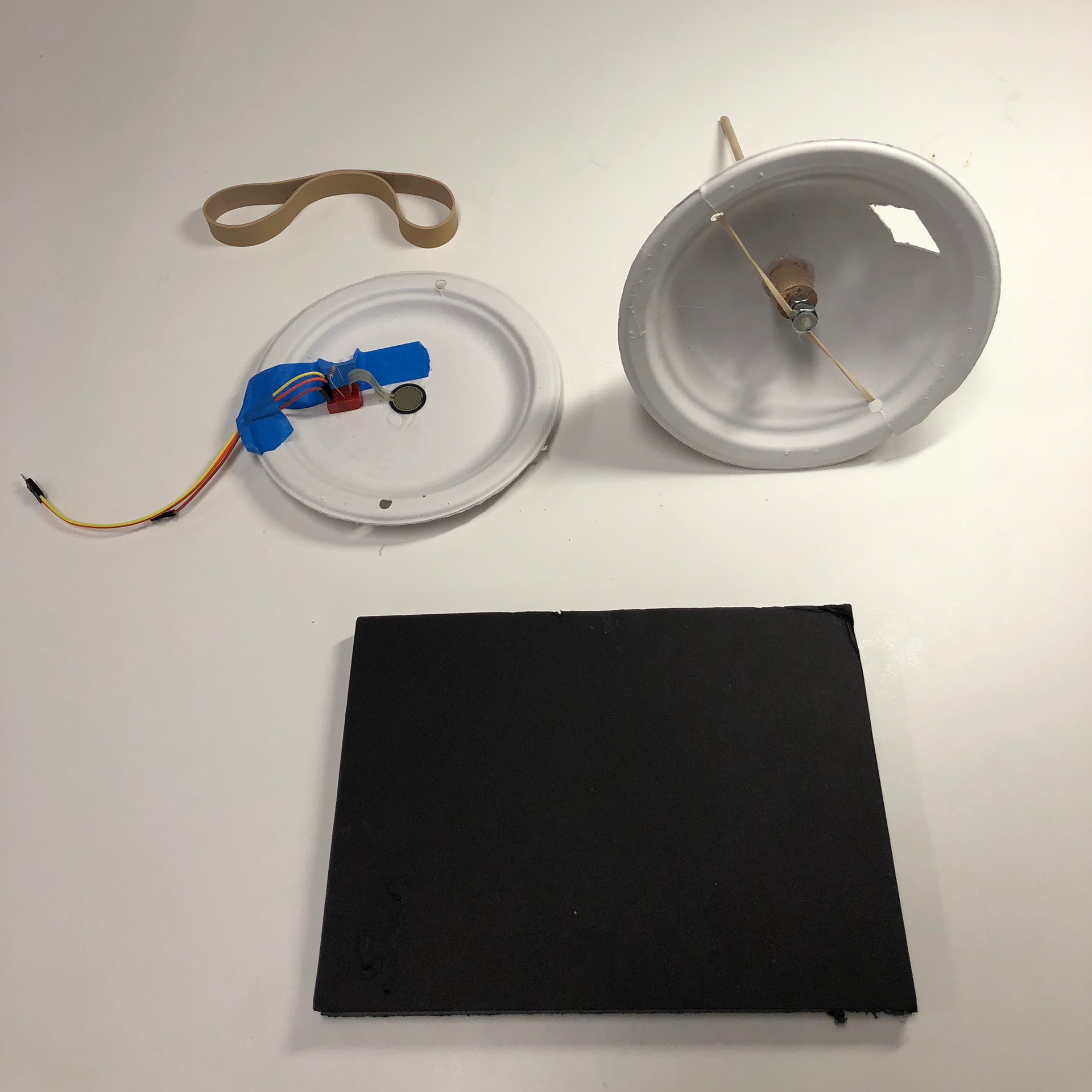Microsoft Hacking STEM
Work on this page is a collaboration of many people on the amazing Hacking STEM team at Microsoft. For more information about the team visit: aka.ms/hackingstem
Project Overview:
Hacking STEM started as a small incubation project that focuses on developing next generation learning experiences for K-12 education. On the team I collaborated with teachers to design project-based activities that embed computational and design thinking into existing middle school curriculum. The driving ethos of the team is to democratize STEM for learners and demonstrate how all schools can provide affordable opportunities to bring Making and 21st century technical skills to the classroom. Each lesson incorporated use of the Data Streamer add-in for Excel, which was developed by the team, to brings to life the fundamentals of science, opens the emerging world of IOT to the classroom, and helps educators meet a wide range of NGSS and ISTE standards.
Project Roles:
- Instructional Design
- Design technology
- User research
NASA Heat Shield
This lesson plan was developed in collaboration with NASA STEM on Station. Students explore the physical properties of different materials and consider which of them would make the best heat shield for a space capsule.
Wind Turbine
Students build a wind turbine using a DC motor, paper cups, skewers, and other low cost materials. Then they explore different blade designs to optimize power output.
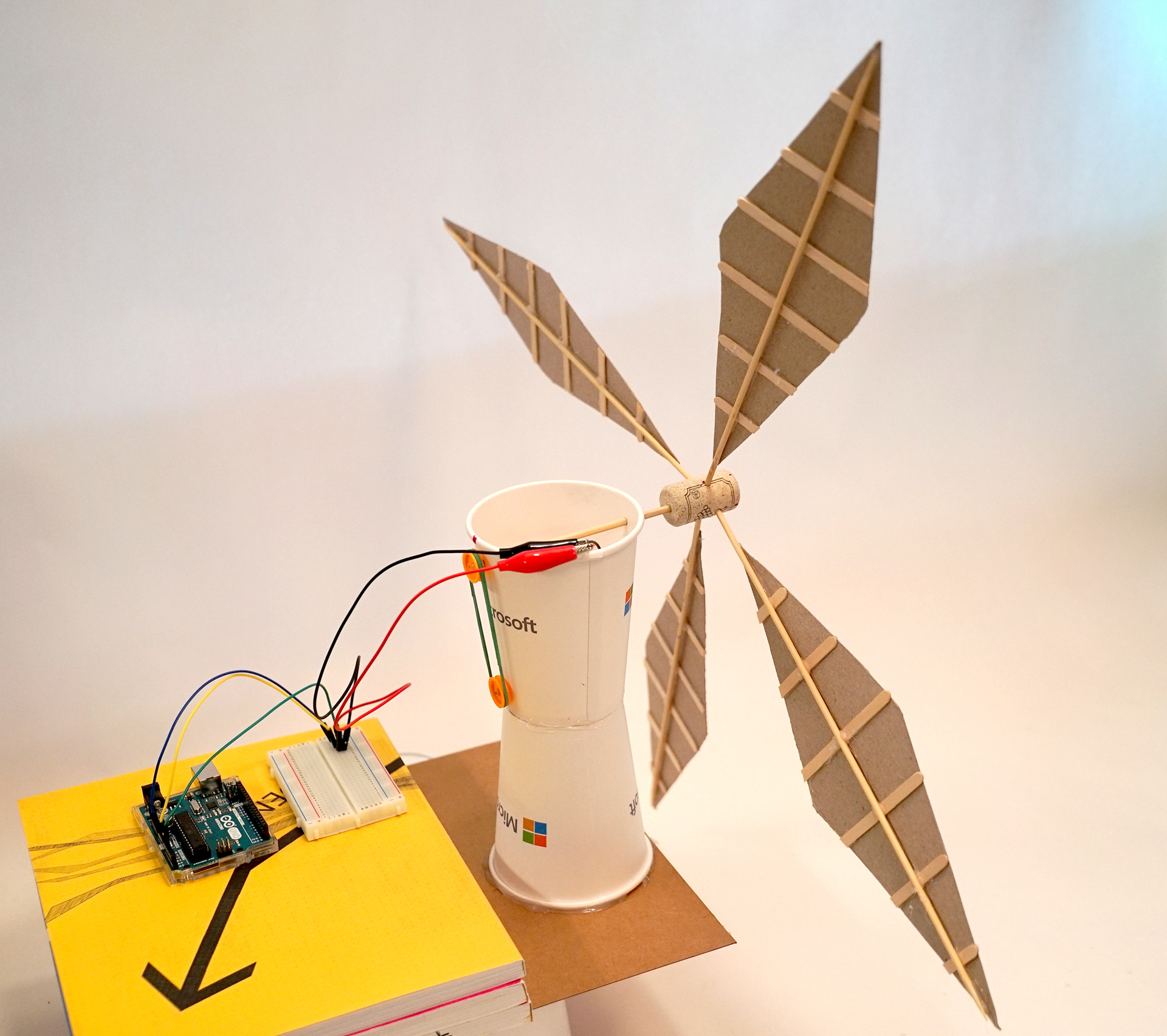
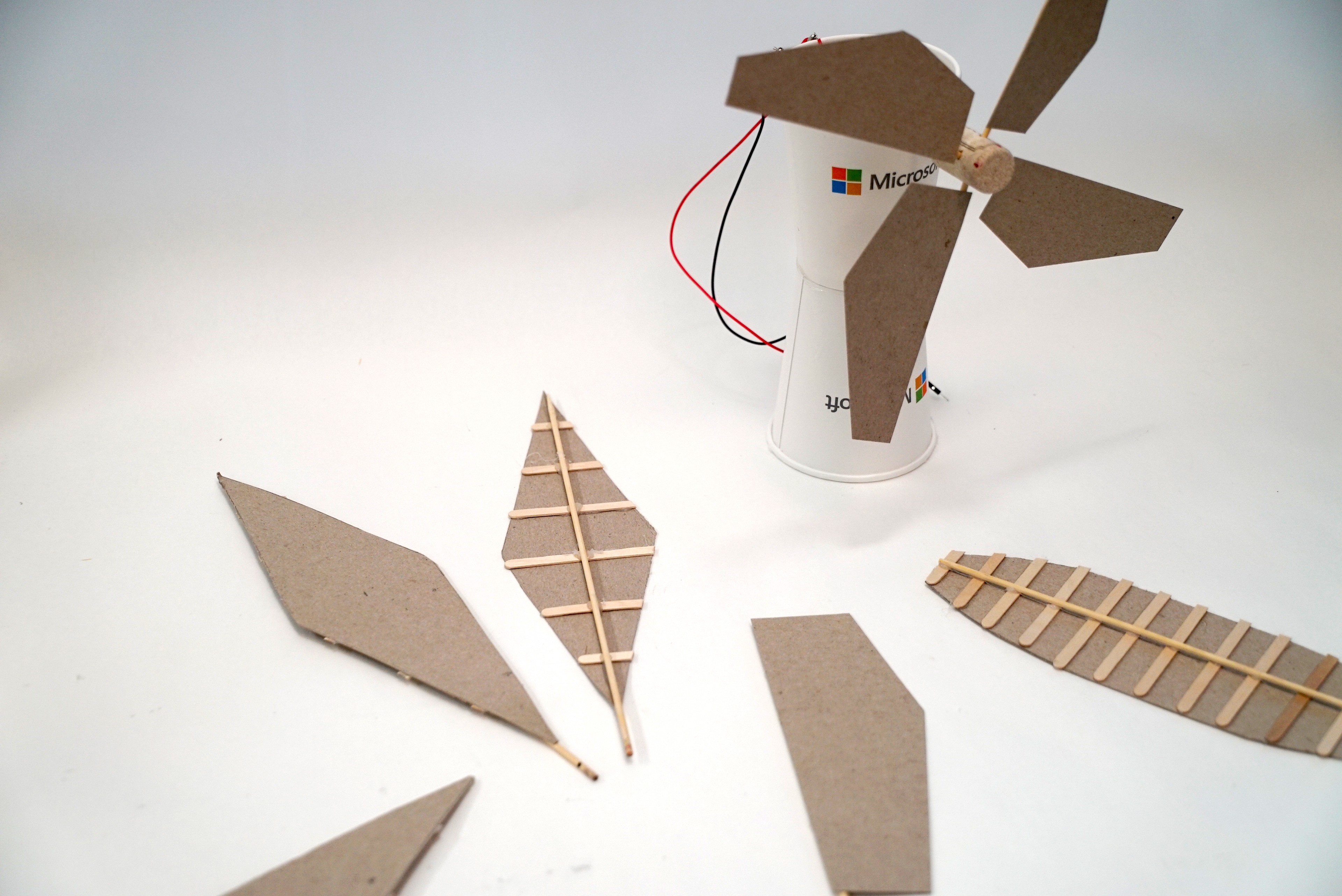
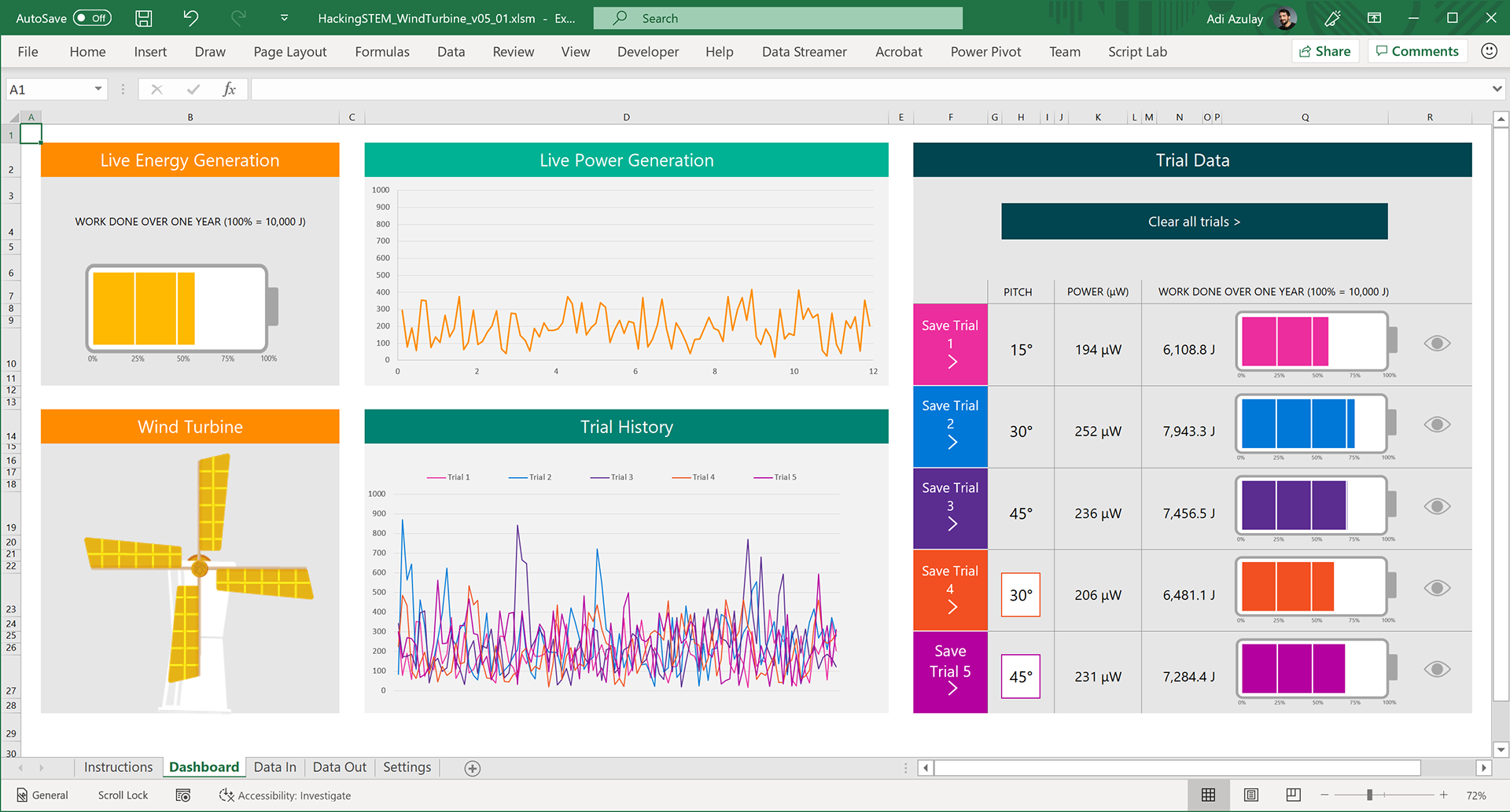
Brain Gong
Students build a model of the brain using a balloon and super absorbent water beads. Then to measure the effects of impacts students add force sensors to the brain and hit it with a weighted tennis ball. Finally the students are challenged to design a helmet to mitigate the impact.
Math Tools
In this lesson plan students build measuring tools from cardboard or LEGO® bricks to create an initial transportation plan for an island national park in Excel. Next, they use the Pythagorean theorem to design their road and bring their national park to life by adding topographic elements in Paint 3D.
My role on this project was to develop the cardboard versions of the tools, work with the LEGO designs in order to integrate the Arduino, write the Arduino board code, write build instructions, and assist in the interaction design of the workbook.
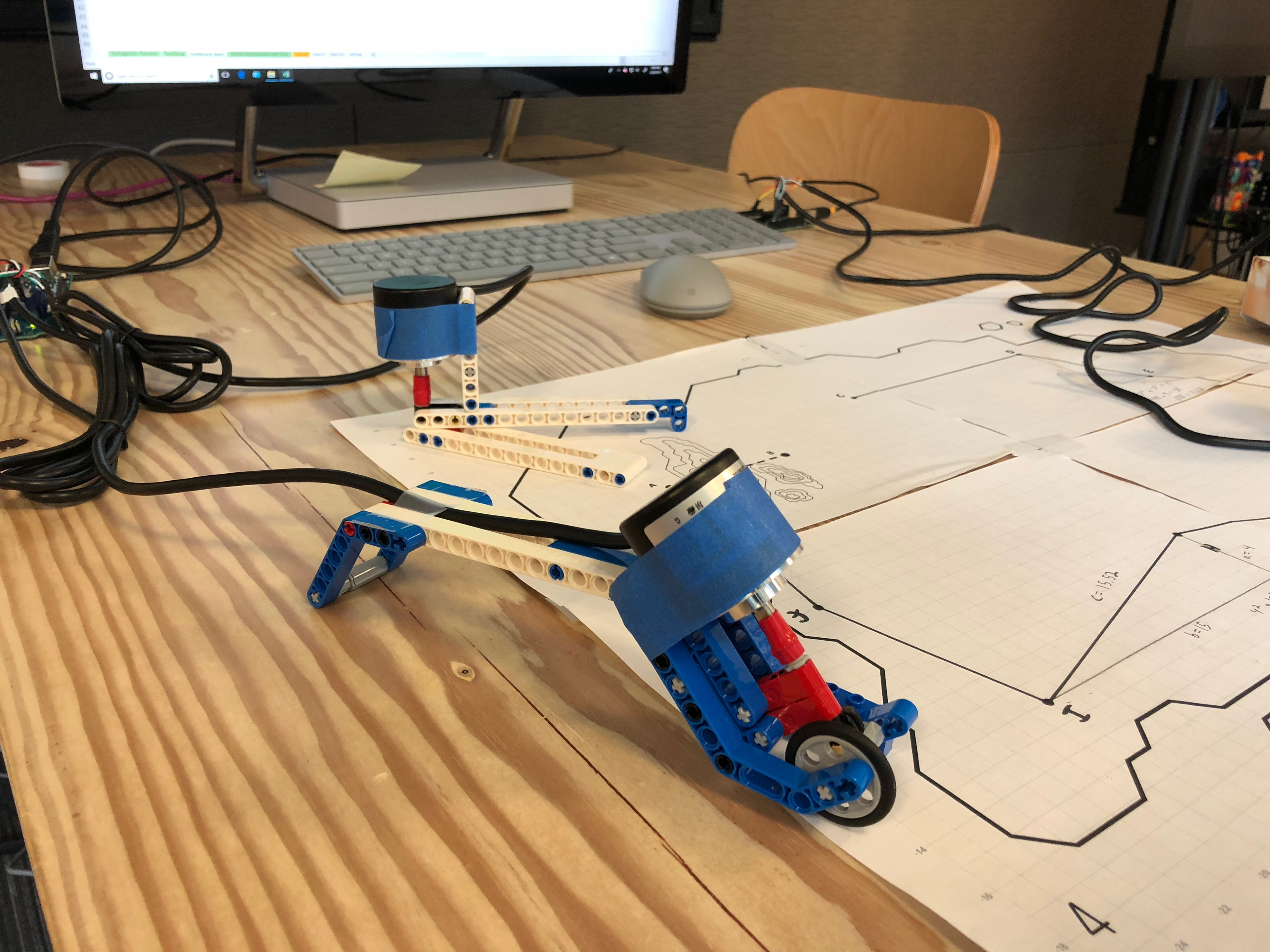
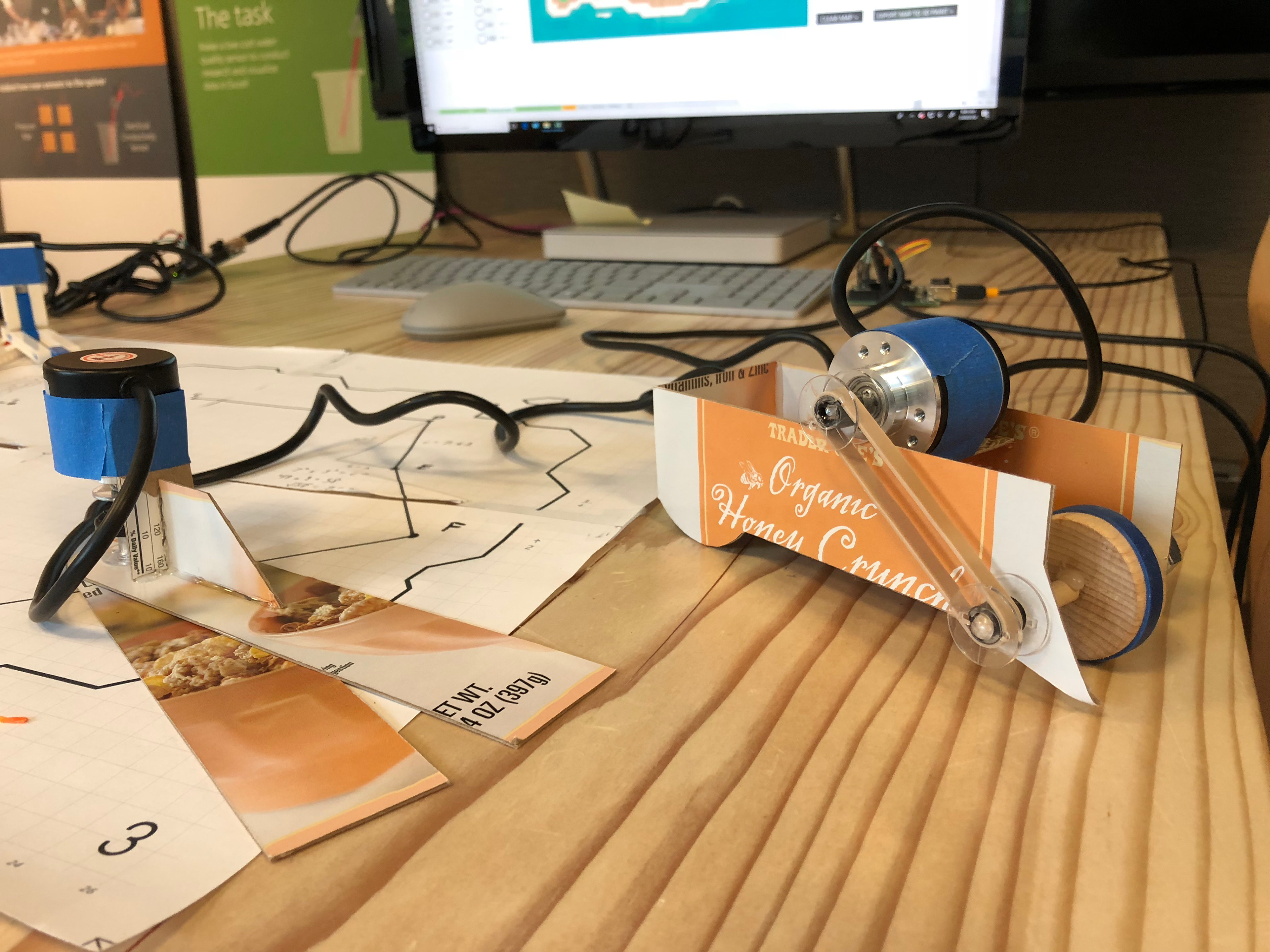
Plastic Cup Accelerometer
My role on the team allowed for open ended exploration of ideas. One of the projects I developed was an accelerometer build out of plastic cups, washers, cardboard, a dowel and pressure sensors. After some early iterations I was able to make my own pressure sensor using velostat and copper tape, a technique developed by the team. While the accuracy of this single axis accelerometer is nowhere near a store bought one, it functions to illustrate the concepts of how one works.
